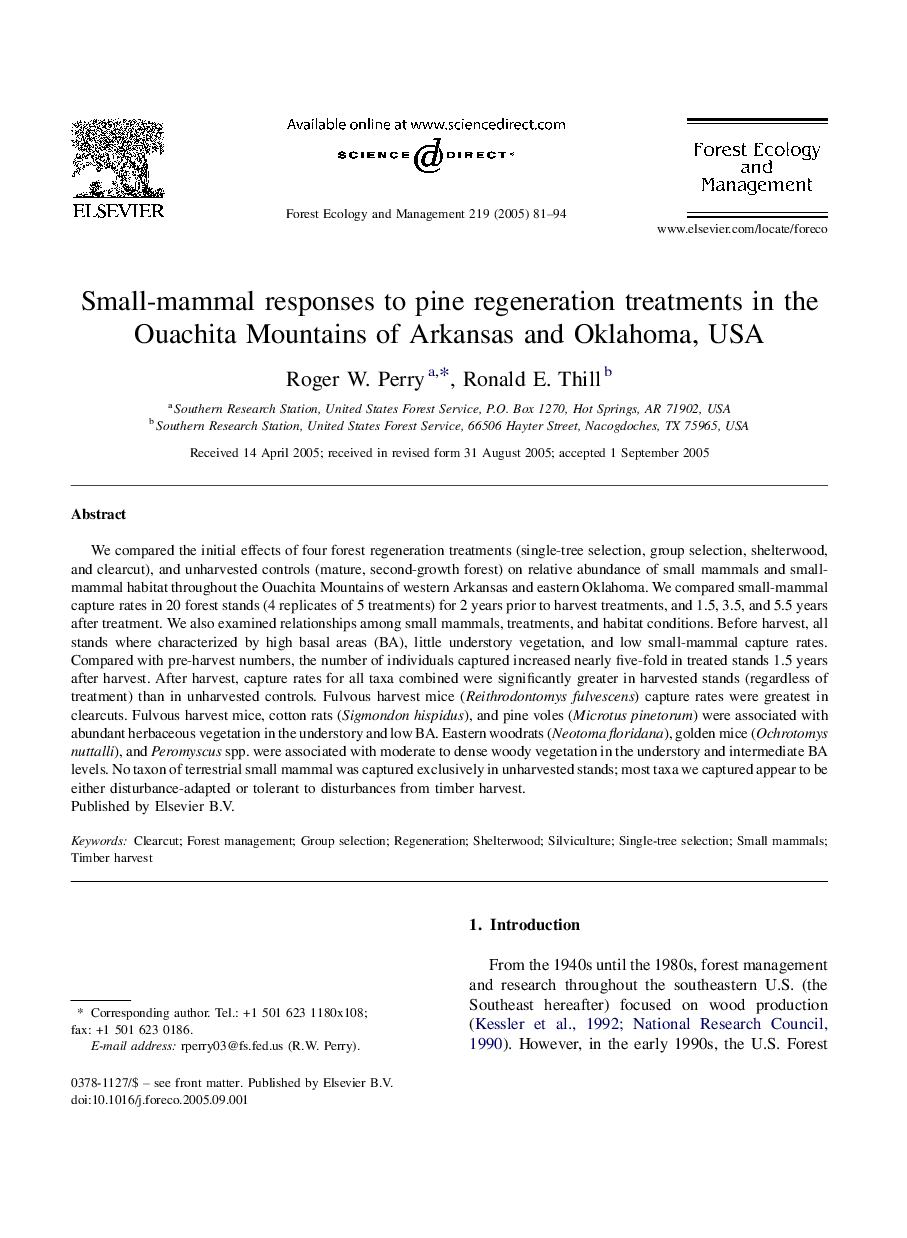| Article ID | Journal | Published Year | Pages | File Type |
|---|---|---|---|---|
| 10250690 | Forest Ecology and Management | 2005 | 14 Pages |
Abstract
We compared the initial effects of four forest regeneration treatments (single-tree selection, group selection, shelterwood, and clearcut), and unharvested controls (mature, second-growth forest) on relative abundance of small mammals and small-mammal habitat throughout the Ouachita Mountains of western Arkansas and eastern Oklahoma. We compared small-mammal capture rates in 20 forest stands (4 replicates of 5 treatments) for 2 years prior to harvest treatments, and 1.5, 3.5, and 5.5 years after treatment. We also examined relationships among small mammals, treatments, and habitat conditions. Before harvest, all stands where characterized by high basal areas (BA), little understory vegetation, and low small-mammal capture rates. Compared with pre-harvest numbers, the number of individuals captured increased nearly five-fold in treated stands 1.5 years after harvest. After harvest, capture rates for all taxa combined were significantly greater in harvested stands (regardless of treatment) than in unharvested controls. Fulvous harvest mice (Reithrodontomys fulvescens) capture rates were greatest in clearcuts. Fulvous harvest mice, cotton rats (Sigmondon hispidus), and pine voles (Microtus pinetorum) were associated with abundant herbaceous vegetation in the understory and low BA. Eastern woodrats (Neotoma floridana), golden mice (Ochrotomys nuttalli), and Peromyscus spp. were associated with moderate to dense woody vegetation in the understory and intermediate BA levels. No taxon of terrestrial small mammal was captured exclusively in unharvested stands; most taxa we captured appear to be either disturbance-adapted or tolerant to disturbances from timber harvest.
Keywords
Related Topics
Life Sciences
Agricultural and Biological Sciences
Ecology, Evolution, Behavior and Systematics
Authors
Roger W. Perry, Ronald E. Thill,
